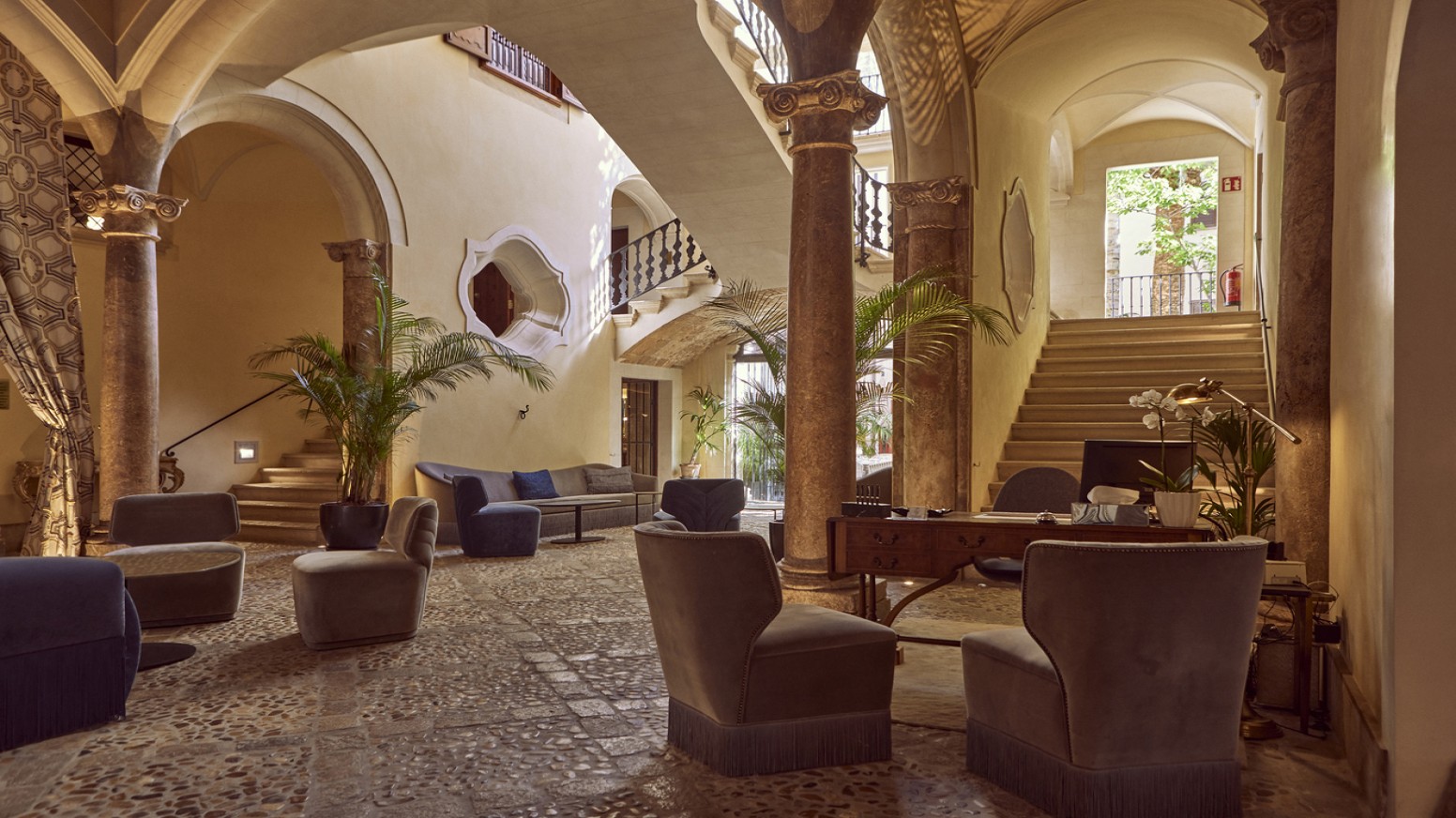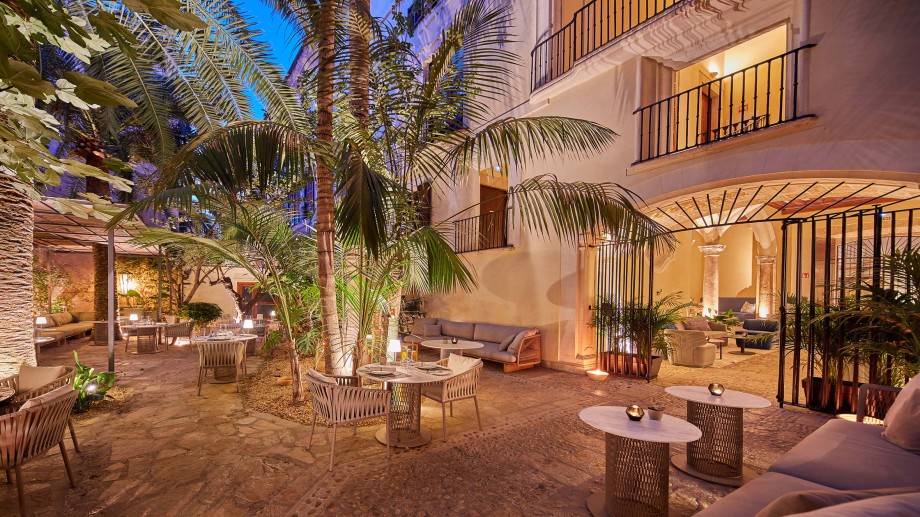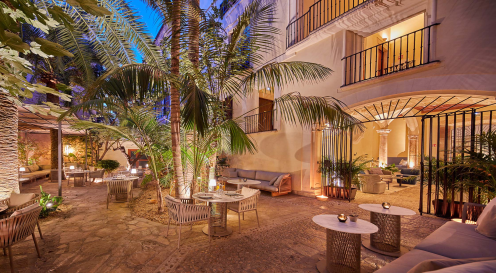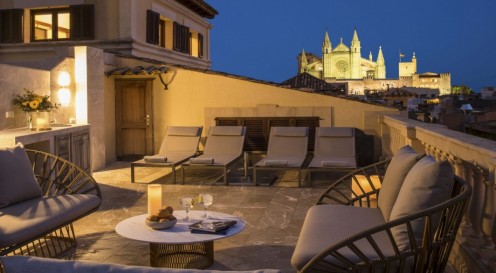History and architecture: Palacio Can Marques in Palma de Mallorca.
- PALACIO CAN MARQUÉS

History and architecture. A historical jewel in the heart of Palma de Mallorca.
The Palacio Can Marqués is an emblematic example of Palma de Mallorca’s rich cultural and architectural heritage. Located in the city’s old quarter, this building has witnessed three centuries of history, from its beginnings to its transformation into one of the most prestigious luxury hotels on the island. The history of Palacio Can Marqués reflects Palma’s evolution and offers a fascinating glimpse into the life and style of the Mallorcan elite over the centuries.
The origins and evolution of Palacio Can Marqués
Palacio Can Marqués dates back to the mid-18th century and belonged to one of the wealthiest and most influential families of the time: the Can Marqués family. The building has a robust baroque style, characterised by its opulence and decorative exuberance. The façades were embellished with ornamental mouldings and reliefs, and the interiors were adorned with coffered ceilings, gilded mirrors and large crystal chandeliers.
The 20th century brought new life to Palacio Can Marques. In recognition of its historical and architectural value, efforts commenced to restore and preserve this cultural treasure. During the 1960s and 1970s, major restoration work was carried out, restoring the palace to much of its original splendour. The restoration focused on recovering key decorative and structural elements while respecting the building’s historical character.
A mixture of styles and periods, the inner courtyard
One of the most impressive elements of the Palacio is its inner courtyard. This space reflects the influence of Islamic and Mediterranean architecture. This central courtyard, surrounded by arches and columns, not only provides a feeling of spaciousness and light but also acts as a quiet refuge from the hustle and bustle of the city. The courtyard gardens and fountains are a testament to the elegance and refinement of the period.
Façades and ornamental details
The Palacio’s façade, which faces the street, is a testimony to the architectural eclecticism that characterises the building. Renaissance and Baroque details abound, such as elaborately moulded windows and wrought-iron balconies. The main entrance is flanked by Tuscan columns supporting a balcony overlooking the street, a clear symbol of status and power.
Luxurious interiors
The interior of Palacio Can Marques is a true work of art. The main halls have high ceilings decorated with frescoes and stucco mouldings. Marble floors and antique furniture complement the rich decoration of the walls, which include tapestries and portraits of the Can Marques family. Each room in the Palacio has been restored with great attention to detail, preserving its historic character while incorporating modern comforts.
The monumental staircase
Another highlight of the Palacio is its monumental staircase, which connects the different levels of the residence. This staircase, with its wrought-iron balustrade and marble steps, is a magnificent example of the craftsmanship and design of the period. The natural light streaming through the windows and skylights creates a bright and welcoming atmosphere, enhancing the beauty of the architectural details.
A new chapter: the transformation into a luxury hotel
In the 21st century, Palacio Can Marqués has begun a new chapter in its history, transforming into a luxury hotel. This project has revitalised the building and allowed more people to enjoy its architectural splendour and rich history. The transformation into a hotel was carried out with the utmost respect for the building's historical integrity, ensuring that its original features were meticulously preserved while adding the modern conveniences necessary for luxury accommodation.
A unique experience
Today, Palacio Can Marqués offers a unique experience to its guests, combining the charm of a historic residence with the comfort and elegance of a five-star hotel. Each of its suites has been carefully designed to reflect the unique character of the building, and the communal spaces, such as the restaurant and lounge, have been restored to offer a welcoming and sophisticated atmosphere. The inner courtyard and gardens provide an oasis of tranquillity in the heart of the bustling city, offering guests the opportunity to relax and enjoy the beautiful surroundings.
Preserving the legacy
The conversion of the Palacio Can Marques into a luxury hotel is a shining example of how it is possible to preserve historical and cultural heritage while adapting to modern needs. This project has ensured the conservation of one of Palma’s most emblematic buildings and helped revitalise the city. It is an attraction for visitors from across the world who wish to experience the rich history and beauty of the island.
FAQs
Why is this building so important?
The Palacio Can Marqués is more than just a building; it is a living testament to Palma de Mallorca’s rich culture and history. Its transformation into a luxury hotel ensures that this architectural gem will continue to be cherished for generations to come.
What architectural styles does Palacio Can Marqués have?
In its inner courtyard, Palacio Can Marqués exhibits a mixture of architectural styles, including Renaissance and Baroque elements and Islamic and Mediterranean influences.







